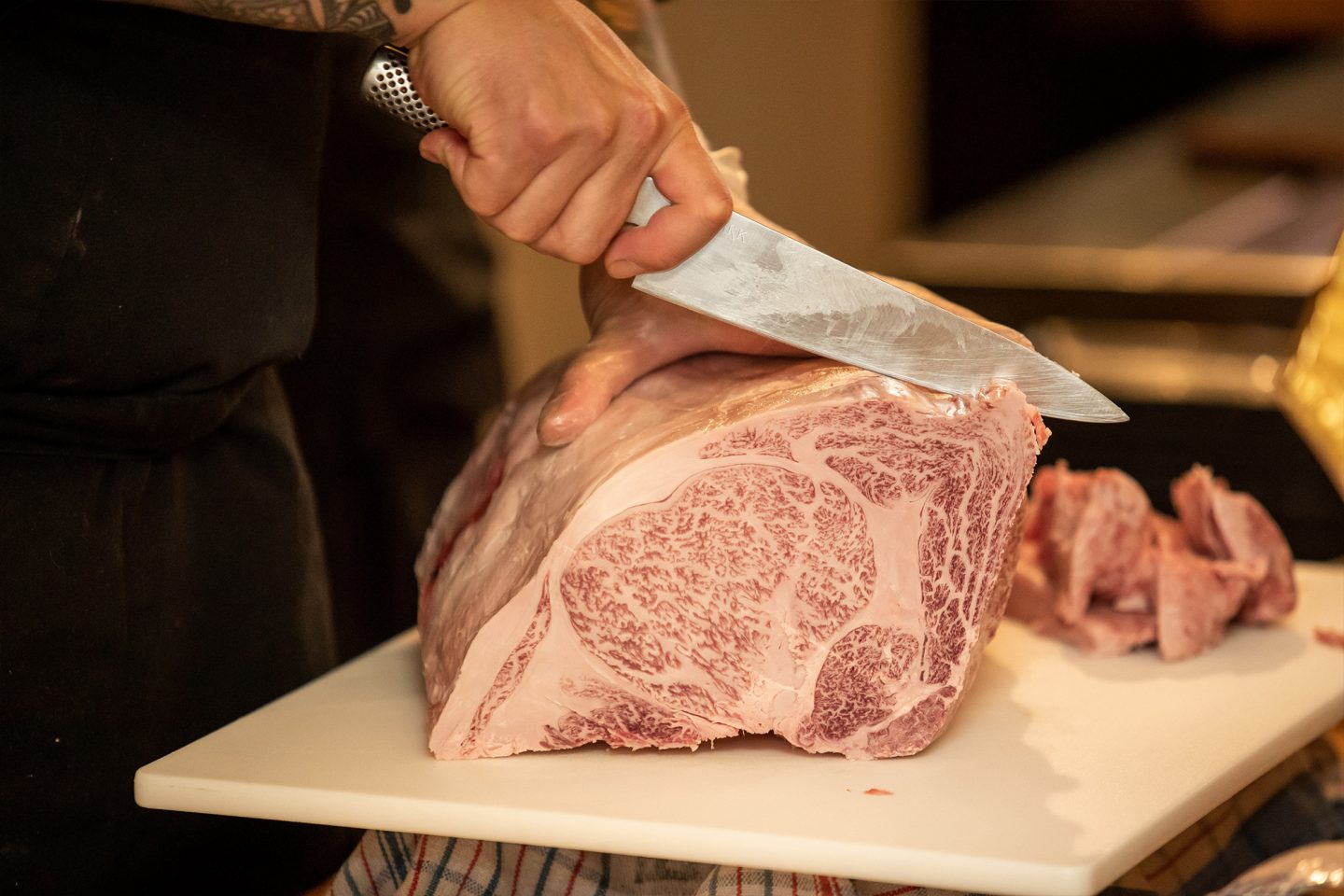Chef
Clark Zhang is ambitious. He wants to present the very best at his Samurai Teppanyaki
House in Hyde Park, which is why he fought for a year to obtain Kobe beef from
Hogyo Prefecture in Japan, and become the first restaurant in Australia to offer
the world’s most expensive cut of beef.
This
has been a dogged quest for Zhang since he moved Samurai from The Parade,
Norwood to larger premises with private dining spaces at Hyde Park. Why he is
fixated on Kobe beef? especially when his restaurant already serves two cuts of
elite wagyu beef, from Wayura Station (Australia’s first and largest pure wagyu
herd in Millicent) and A5 Japanese wagyu (the first imported to Adelaide, since
August 2018).
Both
of these types of wagyu are renowned for their high fat marbeling score that
results in a unique and rich flavor, but Zhang says Kobe beef is a prestige marker that sits
in its own universe. It’s $850 a kilogram or about $500 for a large steak –
although the meat’s intense richness means it is usually served in 80 gram
slices.
It
remains an especially rare item, despite a propagation of elite restaurants
about five years ago that falsely claimed to be selling Kobe beef in the United
States and Europe – a scam exposed by Forbes magazine that put Kobe beef under much
greater scrutiny from food authorities and consumers.

As
a consequence, Zhang has made a great show in his restaurant of accreditation
attached to the Kobe beef he has obtained. In Japan, every restaurant and
retail shop selling Kobe beef displays a 10-digit identification number and a scannable
QR code that corresponds to the particular animal from which the beef was cut.
All Japanese beef is traceable and accompanied by certificates showing the
animal’s lineage, birthdate, slaughter date and weight – to protect the pure
bloodlines of cattle that have been maintained since Japan’s Edo period (1615
to 1867). Japanese Tajima-gyu are the only cattle that can legally be labelled
Kobe beef, and only about 3900 head of cattle each year meet Kobe’s strict
quality standards. It therefore remains difficult to find in Japan, with only a
handful of top restaurants serving it – and only about 10 per cent is exported.
So
why is this wagyu so desirable? Kobe beef fat contains high levels of
unsaturated fatty acids, which melt at much lower temperatures than saturated
fatty acids. Oleic acid melts at 18 degrees Celsius, far lower than human body
temperature, and some of Kobe’s other fatty acids melt at even lower
temperatures. As a result, fat seams contained within the meat dissolve into
the flesh during cooking, making it rich and buttery, giving a sensation of
tenderness as it melts in your mouth.
Zhang
tried Kobe beef in 2017 and immediately enquired about supplies for his
restaurant, but it took a year of persistent requests, along with obtaining
membership of the Japan Teppanyaki Association and references from importer
Osawa Enterprises, before a licence to import Kobe beef was granted. With such
high global demand for Kobe, Japanese exporters are very selective about their
customers.
A
small shipment arrived in Adelaide in October, which Zhang presented to customers
at gala dinners over two nights. Wagyu comprised four plates in a 10-course
degustation menu, allowing diners to compare different wagyu producers and
cuts.
The
difference was in the marbling. Australian wagyu reaches a maximum fat marbling
score of nine, while Kobe achieves a marbling score of 12. Kobe A5 scotch
fillet carries a rich, beefy taste enhanced by a caramelised crust from the
teppanyaki hotplate. By comparison, Kobe A5 tenderloin fillet offers a more
delicate flavour, with fine seams of fat resulting in a texture so soft that it
dissolves in the mouth. Zhang sprays the meat with brandy soon after it hits
the teppanyaki hotplate, then torches it to apply a thin crust that enhances
the meat’s sweet notes. Its palate weight seems almost ethereal for meat of
such rich intensity.
Any
suggestion that one type of wagyu cut is superior over another misses the
point; each has separate qualities and shows subtle flavour and texture
differences worth contemplating. The delight is in the detail. “Kobe is not
only about a taste difference, but a special feeling – a most satisfying
sensation in the stomach,” says Zhang.
Zhang
is waiting for another shipment to arrive in January before introducing Kobe
beef as a regular part of his teppanyaki degustation. It’s a hefty investment
he believes is entirely worthwhile.
Get the latest from The Adelaide Review in your inbox
Get the latest from The Adelaide Review in your inbox